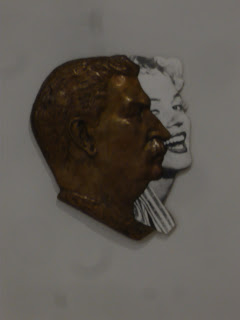Ross Ashmore is about to finally accomplish his three year mission to paint every station on the London Underground – of which there are 267.
‘SPACE art gallery’ are set to exhibit for the first time together, over 100 of these highly expressive impasto paintings.
As an urban landscape artist, Ross feels compelled to document the ‘beauty in our streets’ before the inevitable changes society forces upon them.
He endeavours to convey emotion in his paintings, revealed by his textural mark making in paint, creating energy – giving each painting a life of its own.
Speaking of his work, Ross said: “I love the physicality of painting…and it’s everyday life that I want to highlight in my work. What better subject could there be than the streets where we find these wonderful stations.”
The exhibition will take place at SPACE art gallery, 141 High St, Southgate N14 6BP and will run until Friday 5 April. The opening night is on Saturday 2nd March from 7.00 - 9.00pm.
For more urban landscapes see the following:
Caroline Nina Phillips is showing work in Start 13: The New Industrialists celebrating the full opening of London’s newest creative hub, The Bermondsey Project, which comprises Crisis Skylight Bermondsey, Bow Arts SE1 Studios, London Sculpture Workshop, London Community Furniture and the Outside Puppets Collective. The urban landscape has been a source of fascination, inspiration and a recurring theme throughout the work of Caroline Nina Phillips. Observational drawings and camera snapshots of the local urban environment are used as starting points for these layered, painterly works. Particularly favoured focal points are construction sites; building works; passageways and stairways. Noticeably, the chosen places are those which could be easily overlooked. It is through experiencing; looking; recording and reflecting upon such particular spaces, that Caroline Nina captures their existence and essence.
Part 2 of CiTiES: All Dimensions, an exhibition celebrating urban-living and virtual-architecture, will open shortly at the Tokarska Gallery:
- Thursday 7 March 2013 – Private view will be held at Tokarska Gallery, 6pm-8pm
- Saturday 9 March 2013 – Performance night: 6-9pm. Music provided by Mark Beazley
- Thur 7 March – Sun 17 March 2013 – Exhibition will be open to the public Thursday to Saturday 12 – 7pm
---------------------------------------------------------------------------------
The Jam - Going Underground.




















